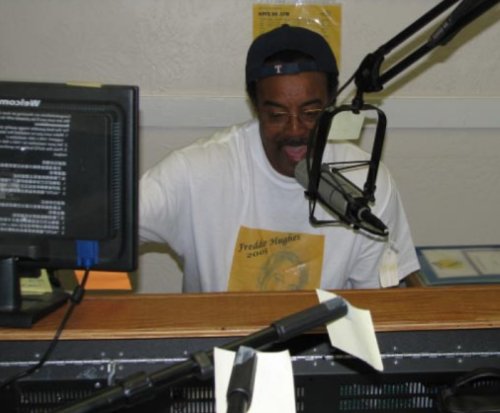- Lake County News Reports
- Posted On
Lakeport's locally based coffee businesses focus on service, quality in competitive market
If you get your coffee on the run, perhaps you have a favorite coffee house or purveyor.
With a new, recently opened shop in Lakeport, residents of the county seat have several choices for satisfying their java cravings.
Harbor House Espresso Bar, Angelina’s Bakery and Kelsey Creek Coffee Co., all on Main Street, and Rico Aroma Coffee House on 11th Street offer a variety of coffee selections and specialty coffee concoctions.
They face corporate competition from Starbucks, a new line of coffee drinks at McDonald’s, and an economy that may have coffee lovers choosing less expensive options from mini-marts or brewing their own pots of caffeinated (or decaf) beverage at home.
How do the smaller, “mom-and-pop”-type coffee businesses attract new customers and attempt to keep a loyal customer base?
Owners of the four establishments surveyed say their success hinges on providing good customer service, excellent products, variety in food and drink, and community involvement.
“It is our philosophy to provide the highest quality products with passion, excellence and innovation,” said Angy DeSimone-Lundeen, who along with her husband Brian Lundeen owns and continues her parent’s family business, Angelina’s Bakery & Espresso.
She said she realizes customers have a choice. “They are in a sense voting with their dollars, promoting a sustainable economy when they choose to support locally-owned businesses.”
Martha and Ron Benway, owners of Harbor House Espresso Bar, agree, noting in their brochure that they have “a strong sense of community.”
Listing a number of local events in which they regularly participate, the Benways said “a community that helps one another and lives strong and independent” is what they strive to help accomplish. “We hope we can help keep Lakeport fun and lively.”
Harbor House is a drive-through espresso bar and offers delivery of their products as well.
“We offer great customer service and a friendly atmosphere,” says Brigette Lefort of Rico Aroma Coffee House.
Her parents, Saul and Debbie Lefort, are owners of the shop, where WiFi (wireless Internet connectivity), an in-house computer, and a 42-inch flat-screen television are available for customer use.
“Quality is No. 1” when it comes to customer satisfaction, said Saul Lefort. It is followed closely by “consistency,” he added, stating that consistency and quality apply to both products served and treatment of customers. The family-run business has to “keep a certain standard,” he said. “Customers are looking for high quality. People appreciate our products. They like our place.”
Saul Lefortt said his family relies on word of mouth and repeat business for attracting customers. However, he recently initiated a new promotional program. He introduced Rico Aroma’s new coffee cup sleeve which contains language inviting customers to return the sleeve for the next cup; purchase six drinks and get one free.
He said he is hoping the idea becomes popular with customers, saving them money and helping the environment at the same time.
At Kelsey Creek Coffee Co., the newest coffee house in Lakeport, owners Amanda and Bruce Beyer hope to entice customers by offering coffees roasted onsite, WiFi availability, live entertainment on a newly-built stage, and plans to offer another choice in beverage: micro-brews. The Beyers recently obtained approval for their liquor license and look forward to having a wide selection of micro-brews available to customers.
For the time being, coffee is the main menu item, and coffee lovers can purchase the organic java by the cup or by the bag for their own brewing.
“We fresh roast all of our own coffee. It is all organic and the freshest coffee you will drink,” said Bruce Beyer.
As the business grows, he said, additional products and services, such as extending the hours of operation, may be considered by the owners.
Like the Beyers, owners of Angelina’s, Harbor House and Rico Aroma stay competitive with drinks other than coffee and various selections of food. Angelina’s offers a full service scratch bakery, deli, artisan breads, and a catering company. Specialty drinks include espresso drinks, smoothies, blended and iced coffee. DeSimone-Lundeen said her business will soon open an ice creamery, a stone slab ice cream shop featuring fresh baked goods to mix into 16 flavors of ice cream.
Rico Aroma’s selections include all natural fruit smoothies, juice, tea and energy drinks. Specialty drinks on the menu include Mexican mocha, java chip, Milky Way, and other flavored coffees. Food choices include breakfast burritos, bagels, pastries and soft-serve ice cream.
At Harbor House, smoothies, frappes, chai and blended chai are among the drink favorites. Specialties include flavored mochas and lattes, cappuccinos, and coffee and espresso blends. Also available are hot and cold tea, Italian sodas, baked goods and fruit.
Angelina’s Bakery & Espresso
365 N. Main
Telephone: 707-263-0391
Hours: Monday through Friday, 7 a.m.-5 p.m.; Saturday, 8 a.m. to 2 p.m.
Time in business: Nine years in Lakeport following six years in Kelseyville.
Harbor House Espresso Bar
1151 S. Main
Telephone: 707-263-7004
Hours: Monday through Friday, 6 a.m. to 6 p.m.; Saturday, 7:30 a.m. to 4 p.m.; Sunday, 8 a.m. to 2 p.m.
Time in business: Nearly 12 years under current owners; originally opened in 1995.
Kelsey Creek Coffee Co.
930 N. Main
Telephone: 707-263-5600
Hours: 7:30 a.m. to 5 p.m. daily
Time in business: Four months in Lakeport, following 10 years in Kelseyville.
Rico Aroma Coffee House
1025 11th St.
Telephone: 707-262-0285
Hours: Monday through Friday, 6 a.m. to 6 p.m.; Saturday and Sunday, 7 a.m. to 6 p.m.
Time in business: Five years; also operates a coffee house in Clearlake.









